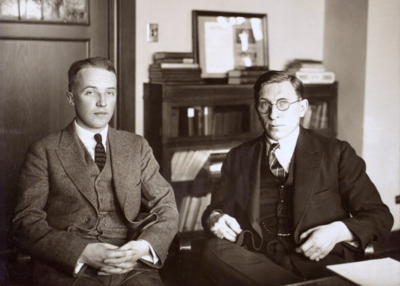
The successful use of insulin in treating human patients followed. But because Best did not receive his medical degree until 1925, he did not share the Nobel Prize for Physiology or Medicine awarded to Banting and J.J.R. Macleod in 1923 for their role in the work. Best also discovered the vitamin choline and the enzyme histaminase. He was one of the first to introduce anticoagulants in treatment of thrombosis (blood clots).
In May 1921, while still an undergraduate, Best became a laboratory assistant to Banting at the University of Toronto. In the months that followed, they performed their prizewinning research on insulin. Best continued as research associate in the Banting and Best Department of Medical Research, which was created at the university in 1923, and he succeeded Banting as its director (1941–67). With Banting he wrote Internal Secretions of the Pancreas (1922).
The first clinical tests on a human patient were conducted on a severely diabetic 14-year-old boy. Although the injections of the extract failed to have resoundingly beneficial effects, the Toronto team continued to experiment. A short while later Collip made a breakthrough in purifying the extract, using alcohol in slightly over 90 percent concentration to precipitate out the active ingredient (insulin). At the same time, though, personal tension was mounting among the four scientists, as Banting became increasingly bitter toward Macleod and pitted himself and Best against Collip in the race to purify the extract. At the end of January, Collip came to Banting and Best’s lab and informed the two that although he had discovered a method to produce pure extract, he would share it only with Macleod. It was only Best’s quick restraint that stopped Banting from attacking Collip. Fortunately for the future of insulin an uneasy agreement made a few days later allowed them to continue to work together. On May 3, 1922, Macleod, representing the group, announced to the international medical community at a meeting of the Association of American Physicians that they had discovered “insulin”—the antidiabetic agent.
Credit : Britannica
Picture Credit : Google




